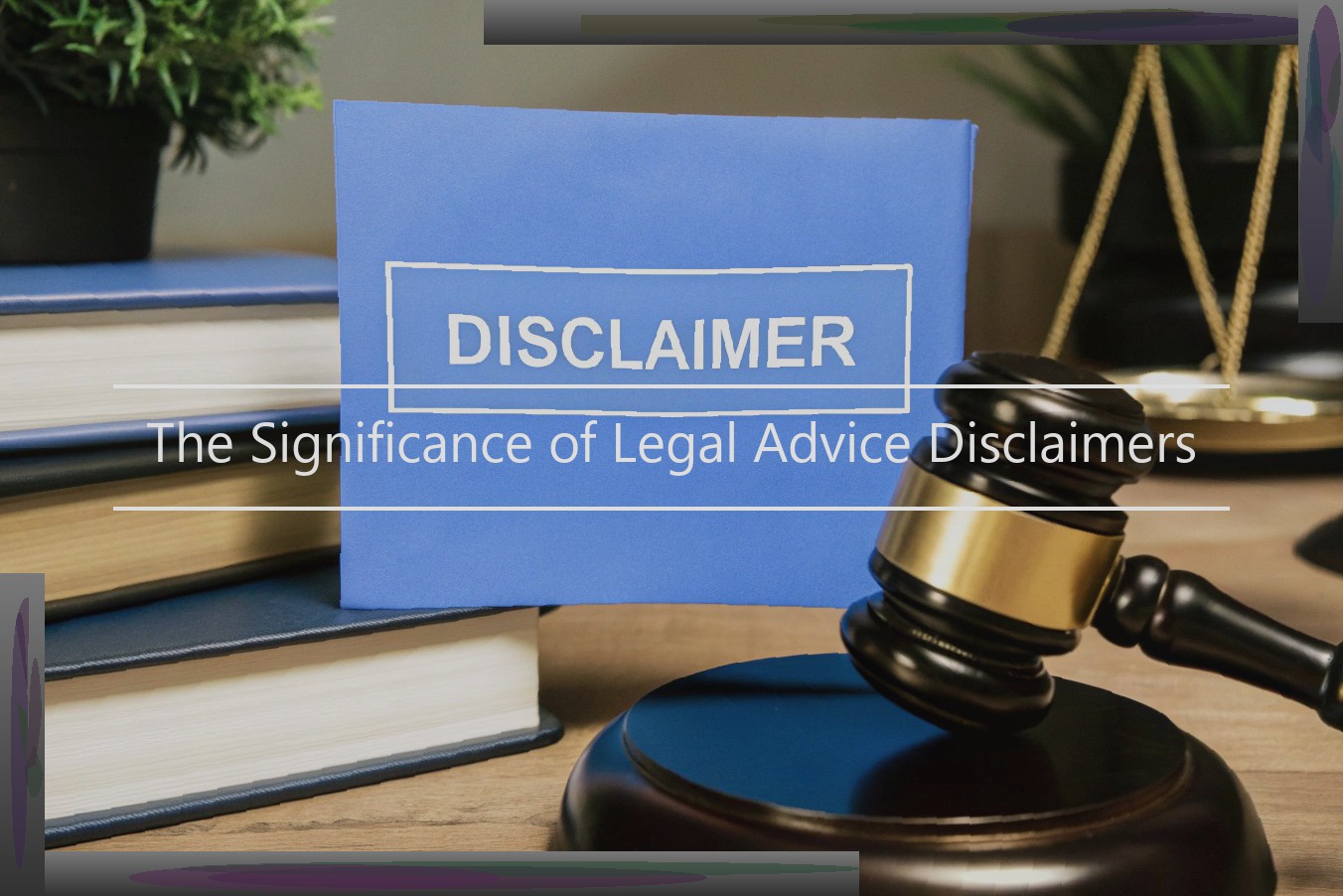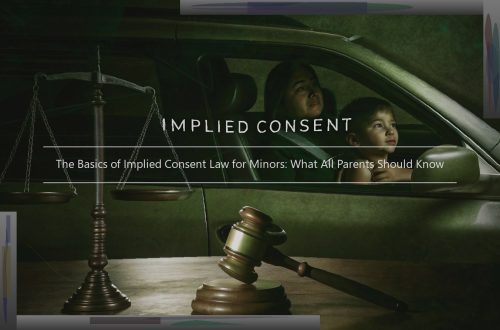The Significance of Legal Advice Disclaimers
What Constitutes a Disclaimer of Legal Advice?
A disclaimer of legal advice is a statement that a particular communication made by a person or entity should not be considered legal advice, and that the recipient should seek their own counsel regarding any legal rights or obligations they may face. Disclaimer of legal advice language is used frequently in engagement letters and in attorney emails to clients, so much so that it is often overlooked by attorneys and clients . The disclaimer often uses nearly identical language after every email, but how many clients have actually read the language and understand its purpose? This blog post explains what a disclaimer of legal advice is intended to do and why it is so commonly used by attorneys in their communications and work products.

The Value of Legal Advice Disclaimers
There are a few different reasons why a legal advice disclaimer is important for both a law firm or attorney and clients. The most obvious reason is that if a law firm or attorney gives legal advice to a client without a disclaimer, they are setting themselves up for a potential malpractice claim. Even if the law is not as clear cut as either party thought, if the attorney tells a client not to worry about an issue because it will be fine, the attorney is on the hook should it not be fine, regardless of whether it really would have been fine anyway.
A legal advice disclaimer is also important for a law firm or attorney because it avoids giving the impression that information on a website is comprehensive. While it is understandable that a law firm or attorney would want to offer general legal information from their site, it is also important to clarify to potential clients that such information is not tailored to their individual situation or needs. Again, should any issues arise or processes not work out as expected and the client feels that they were misled by the general legal information on the website, the law firm or attorney is liable.
A legal advice disclaimer is also important for clients because it clarifies to them that the information given to them may not apply to their individual circumstances, and therefore, if they need legal advice they should seek counsel from a licensed or practicing attorney.
Essential Components of an Effective Disclaimer
An effective legal advice disclaimer will clearly and concisely communicate to the website or app user that the content, information, materials and/or resources available through the website/app are not intended to create attorney-client relationship, and as such, cannot be considered a substitute for personalized or individualized legal advice. The disclaimer should also state that the information provided is not intended as legal advice and does not constitute legal counsel, and that the user should seek legal representation if needed. Often, the "disclaimer" can be incorporated into the "terms and conditions" process where the user acknowledges the same.
While we are not advocating for specific terms, the following are generally recommended components of a legal advice disclaimer to adequately mitigate against liability when creating and distributing such content:
Language and terminology considered:
In addition to the above, if the disclaimer is located on an individual page, it should include a hyperlink directing the user to the website/app’s T&Cs; if the disclaimer is located on an individual field of a form, it should include a hyperlink to the website/app’s T&Cs. If the disclaimer is "user-facing" (such that the user sees the disclaimer), it is advisable to have the user click "accept" prior to receiving the content in question.
Regulatory risks are also to be considered in all situations. The FTC has addressed the risks of posting legal advice on websites/apps in endorsed or sponsored content.
Common Situations for Using Disclaimers
There are many situations where it is appropriate to include a legal advice disclaimer. The most obvious is a blog or other website that regularly features commentary about legal developments. In addition to offering insight into changes in the law, there may be times when readers have questions about something they have read. However, whether they read something on your blog or in another publication, it is important that your readers understand that you cannot offer them advice if you have not actually met with them.
There are also many other places where adding a disclaimer is a smart practice. Newsletters are being published by many different organizations, and some of them are very well-read. In this case, disclaimers are important to help those who might need legal help in the future and ensure that they don’t blame the organization for publishing what they read. You may find that right in the very first paragraph of the newsletter, someone has underlined something and made notes asking for more information. A newsletter disclaimer can go a long way toward helping people understand their options.
If you provide employment to a number of different workers, information about workplace law can be very helpful to your workforce. Employees benefit from being educated about their rights and the employer also benefits with fewer disputes when they have an understanding of what their protections are. It’s smart management to be proactive about teaching employees about labor and employment laws, however, a disclaimer should always be included.
Potential Legal Risks of Failing to Include a Disclaimer
The absence of a legally required disclaimer can have severe consequences. A hazy, incomplete or flawed disclaimer has the same effect in some jurisdictions. This can allow parties to obtain significant financial judgments against a defendant even though they are not members of the target class and even if the advice was correct at the time. For example, if a pharmaceutical company is not careful, the absence of a statutory "dispensing fee" or "non-payment fee" disclaimer on a document which has been provided to potentially hundreds of thousands of people may result in a claim for tens of millions of dollars by an individual or a thousand individuals .
Parties must be aware that a disclaimer of legal advice in any form is subject to attack. Any such disclaimer must be robust enough to withstand the scrutiny the absence of such a disclaimer creates. Failing to include an explicit disclaimer of legal advice may well have the same effect as giving the legal advice or opinion, and this can create significant exposure for businesses in particular.
How to Draft an Effective Disclaimer
Disclaimers are meant to shield us from liability, but unfortunately they often do not work. Many websites and blogs have a standard disclaimer saying that the content of the website does not constitute legal advice, and people read that and think, "Too bad. I read the content and got legal advice." Disclaimers are only enforceable if the person relying on the content takes action in reliance on it. If you read "don’t rely on this," then you’re on notice that it’s not legal advice, and you can’t thereafter turn around and say it was legal advice.
In order to make a disclaimer effective, you have to make sure that it is as conspicuous as possible. It has to be there on each page that contains content you want people to see, and it has to be clear and unequivocal. There is no magic formula for effective legal advice disclaimers. So here are some things to keep in mind: First, make sure it’s not too long. Don’t make people scroll to get to the end of it. You want people to read the whole thing and you want them to understand what it says. Second, to the greatest extent possible, make sure that the disclaimer is contemporaneous with the content. Third, make sure that you actually mention legal advice in the disclaimer. Fourth, make the disclaimer short, simple and free of legal jargon. Fifth, put the link to the legal terms in the beginning of your blog entry or whatever piece of content you’re discussing. Seeing that link makes it less likely that the reader is going to get confused or go off topic. Finally, assure the reader, "This is not legal advice. This is not legal advice. This is certainly not legal advice." There’s also a list of other things that you must do before you can safely provide information on compliance with the law. First of all, avoid giving specific facts about the individual’s situation that may have led to their inquiring about the law. If they do not give you facts about themselves, or ask you about facts about themselves, then you probably don’t run into any trouble.
Many companies who have blogs encourage their employees to post entries on the blog. If your company really wants true professionals communicating on your messages, put your best people out there who know what they’re talking about. On the flip side, if you have a lot of people talking about a topic on one of your blogs, doesn’t that make the person at the top of the company responsible for the actions of all of those people? The capacity to provide information on a blog is limited, in that, the person reading it can only see the content that is available on the site at the time that he is seeking it. As a result, an individual is not likely to challenge what would be an otherwise legally binding disclaimer, since the individual is going to be thrown out by a federal judge.
Legal Advice Disclaimer Examples
When it comes to the use of disclaimers like "this is not legal advice" or "you should speak to a lawyer about this," the common failure is more of omission than commission. In other words, what many lawyers and law firms running websites fail to do is provide it! Disclaimers can take many forms. For example, banks and other financial institutions use disclaimers when having representatives in your home to provide information on financial products or related items. However, most law firms don’t place them on their home pages or other website locations. Here are a few more examples of where disclaimers are used around the Internet:
- The U.S. Securities and Exchange Commission website includes this legal advice disclaimer at the bottom of each page .
- Good Housekeeping magazine has this legal advice disclaimer in its "Disclaimers" section.
- The American Council on Education has this legal advice disclaimer in its "Legal Disclaimer" section.
- The University of California San Diego has this legal advice disclaimer in its "Terms of Use" section.
- The Mayo Clinic website has this legal advice disclaimer in its "Medical Disclosure" section.
What do all of these legal advice disclaimers have in common? All of them clearly state the need to speak to a lawyer in view of your specific circumstances or the need to avoid creation of an attorney-client relationship. In that sense, you will see that law firms fail to have one and to say that much more can be done with respect to it.




